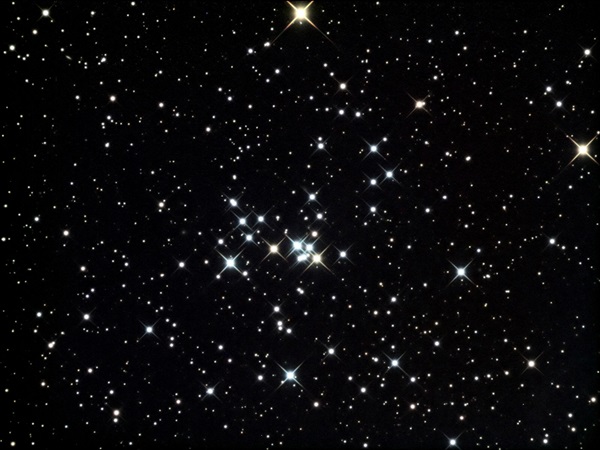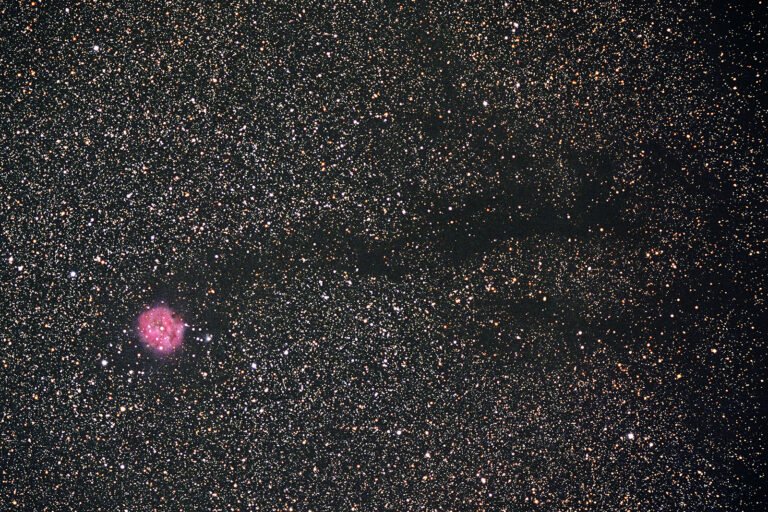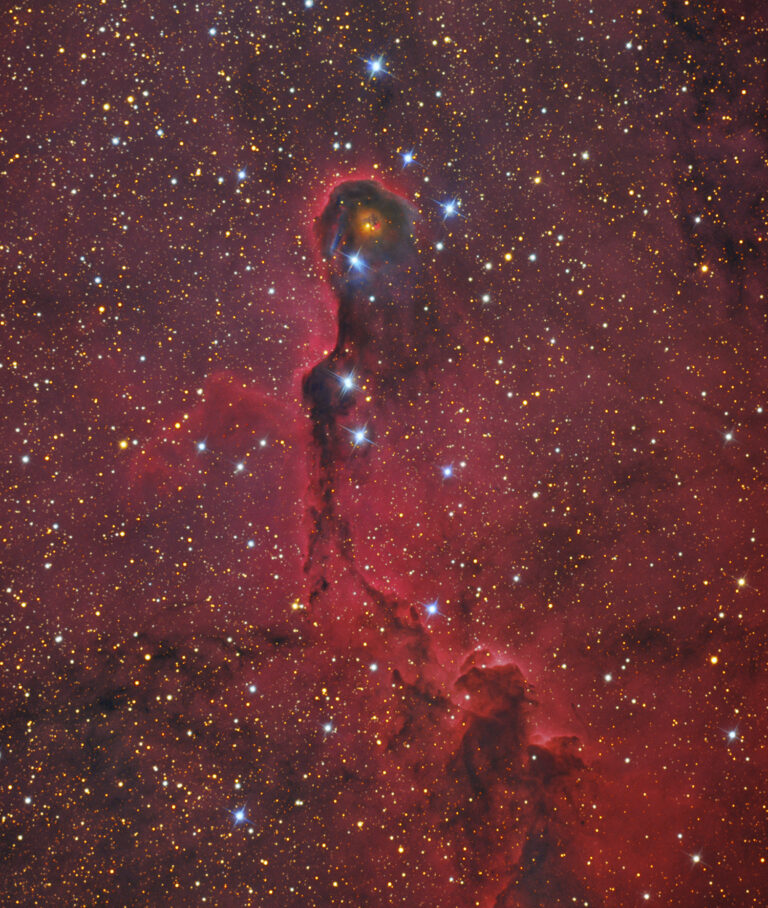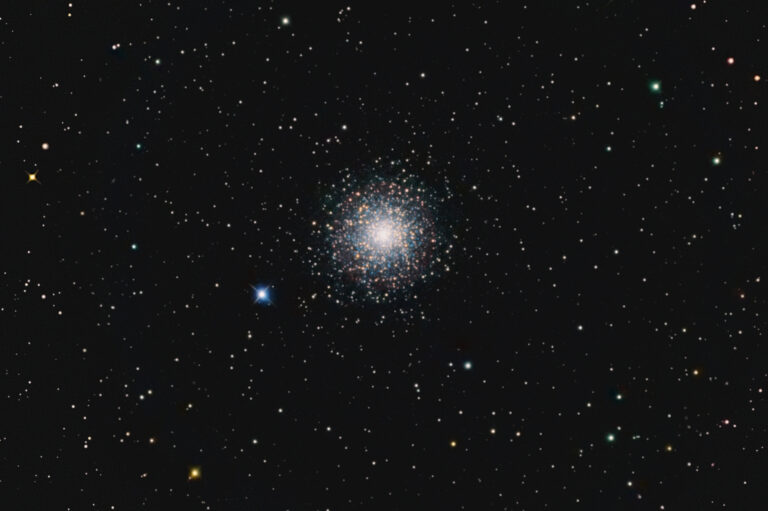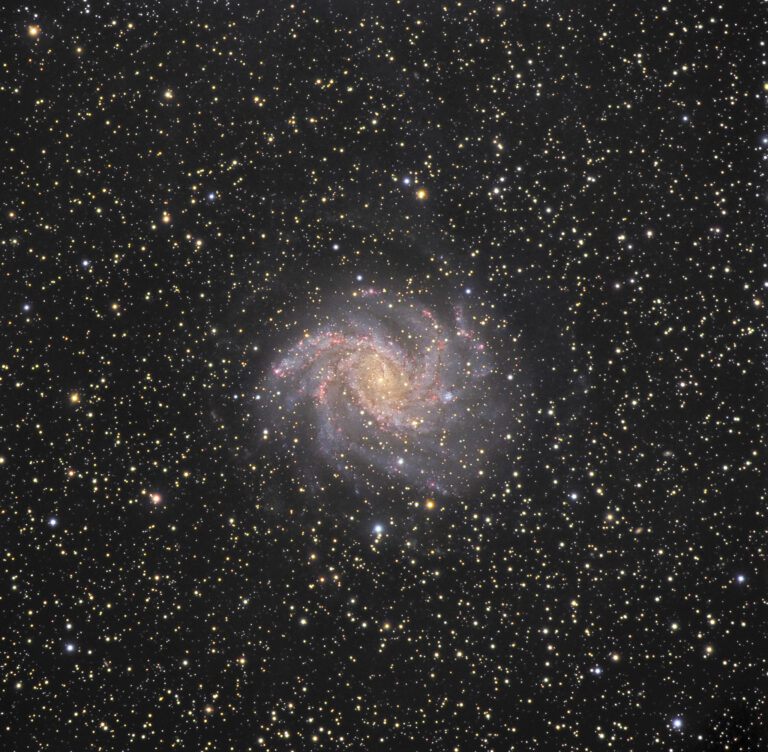Key Takeaways:
Let’s start in the constellation Taurus the Bull. I can still recall one frigid January night back in high school when I first spotted the Crab Nebula (M1) through old 7×35 binoculars. Lying in a snow bank and scanning the winter stars, I aimed toward its location, 1° northwest of Zeta (ζ) Tauri, the Bull’s eastern horn. Sure enough, there it was. Admittedly, the Crab lies at the limit of most binoculars, but I could definitely make out its tiny patch by using averted vision. How about you?
Next, head 42° northwest to sparkling M34, one of my favorite early winter open clusters. M34, an object British amateur astronomer Jeff Bondono christened the Spiral Cluster, is located roughly midway between Algol (Beta [β] Persei) and Almach (Gamma [γ] Andromedae). Only 5° separate Algol and M34, and both just squeeze into the same view. M34 looks like a hazy patch of light about as large as the Full Moon. Through my 10×50 binoculars, the brightest of its 100 or so stars twinkle amid the soft glow of fainter, unresolved suns.
Next, target a different type of star group. Globular clusters litter the summer Milky Way, but winter holds just one within reach of most binoculars.
You’ll find M79 in the small constellation Lepus the Hare, directly south of Orion. To spot the cluster, extend a line from Arneb (Alpha [α] Leporis) through Nihal (Beta Leporis), and continue an equal distance southward. It can be challenging to see through 50mm binoculars, but with patience, you’ll spot the faint, round glow of M79 lying a Moon’s diameter east-northeast of the magnitude 5.5 star SAO 170351.
From Lepus, head north through Orion. You’re probably familiar with the Double Cluster in Perseus, but what about the “Double Cluster” in Taurus? That’s what Stéphane Meloche of Coaticook, Quebec, calls the close-set open clusters NGC 1807 and NGC 1817, which you’ll find some 8½° east of Aldebaran (Alpha Tauri). NGC 1807 contains about 20 stars and has an apparent diameter of 17′. Giant binoculars may just be able to resolve its brighter stars, which make a cruciform pattern. NGC 1817 proves a little less distinct, although it has about three times as many stars. Viewing both together through his binoculars reminds Deer Park, Washington, observer Jonathan Casselman of a bow tie. Do you agree?
For our next three targets, head to the constellation Monoceros the Unicorn. Of this trio, only M50 was known in Charles Messier’s time. Monoceros may be vague, but M50 is surprisingly easy to spot if you aim about halfway between Sirius (Alpha Canis Majoris) and Procyon (Alpha Canis Minoris). Through most binoculars, M50 looks like a soft blur of light peppered with a few dim stars. Its brightest sun, just south of the cluster’s center, shines at 8th magnitude and may appear golden through 80mm and larger binoculars.
Although Messier never saw this next open cluster, NGC 2232 is easily visible through binoculars if you look about two fields of view (13°) due east of the Orion Nebula (M42). This object’s brightest star is 5th-magnitude 10 Monocerotis.
The remaining 20 or so cluster suns range between 8th and 10th magnitude. With an apparent diameter equal to that of the Full Moon, triangular NGC 2232 strikes me as more enjoyable through binoculars than through most telescopes.
Our final stopping-off point in Monoceros is Hagrid’s Dragon (NGC 2301). Astronomy magazine Contributing Editor Stephen James O’Meara sees a dragon in flight when he looks at this cluster. He named it Hagrid’s Dragon after a creature in the Harry Potter series of novels by J. K. Rowling.
To find it, scan 13° west-southwest of Procyon. NGC 2301 will be there, displaying a tiny smudge centered on a dim star. With averted vision, I can count half a dozen faint stars within the mist in my 10x50s. My 20x80s further resolve that glow into many pinpoints.
Let’s wrap things up this season with a pair of pretty double stars. The first, Nu (ν) Geminorum, marks the halfway point between the ankles of the twin Gemini brothers. Aim its way, and you’ll discover that 4th-magnitude Nu flies through space with an 8th-magnitude partner just to its northwest. Set in a rich star field, both white stars are separated by nearly 2′, so just about any binoculars should resolve them.
Finally, the 4th-magnitude binary star 15 Geminorum nestles only 0.6° northwest of Nu Gem, just past an intervening star, 16 Gem. But be forewarned that only 25″ separate 15 Gem and its magnitude 8.4 companion. That’s right at the resolution threshold for 10x binoculars, so you’ll need to brace your equipment against a support or mount the binos on a tripod to steady the view. If you see them, can you also make out that 15 Gem is slightly yellowish and its companion faintly blue?
That’s our winter roundup, but there are many more breathtaking wonders awaiting you tonight. Dress warmly and enjoy the view. And remember our motto: Two eyes are better than one.


